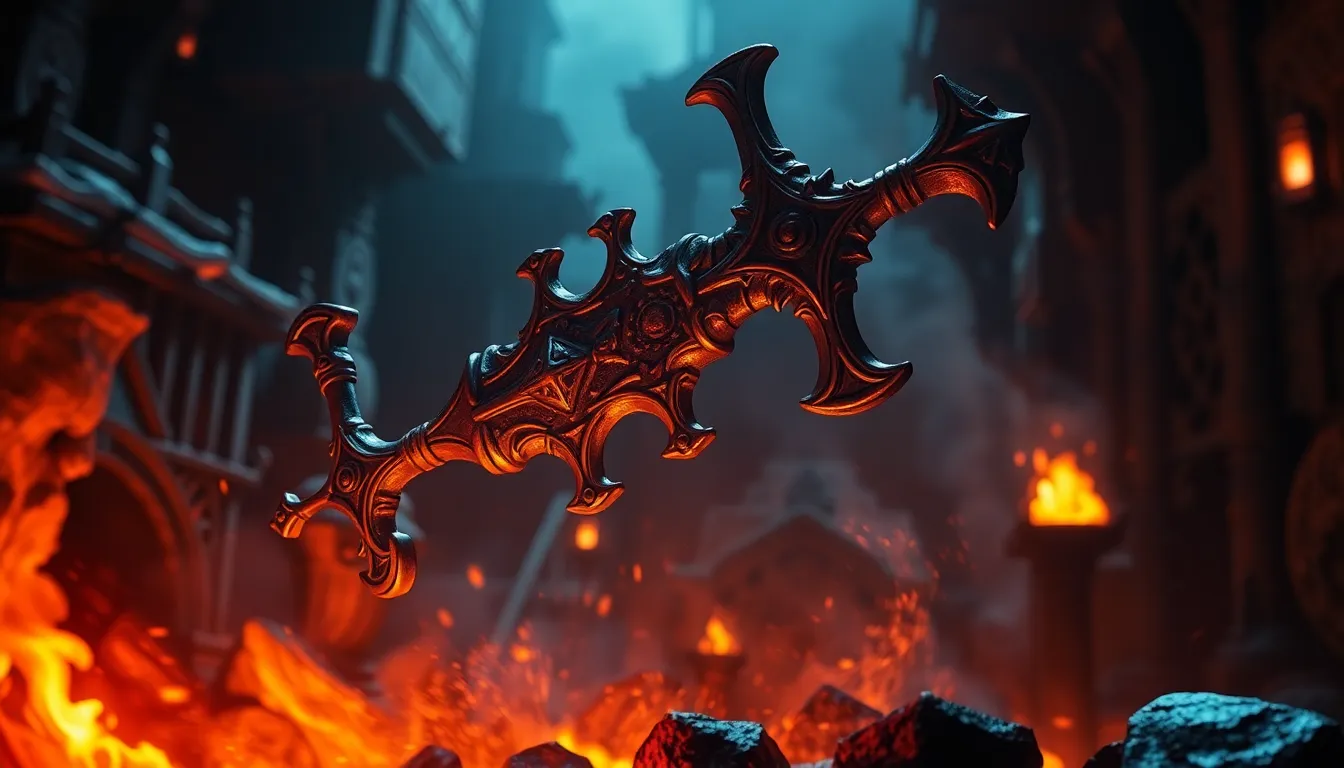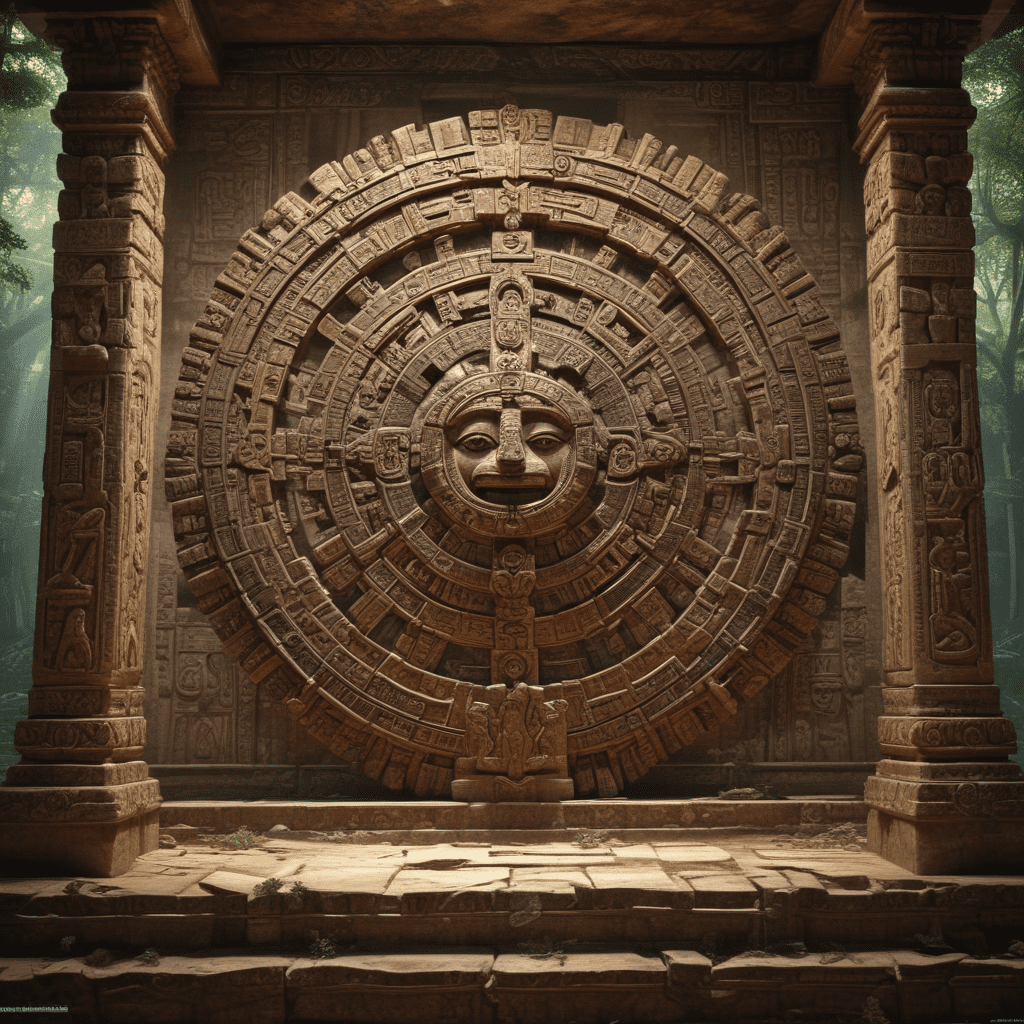Legends of the Forge: The Craftsmanship Behind Mythical Weapons
I. Introduction
Mythical weapons have long captivated the imagination, weaving their way through the fabric of folklore and mythology across cultures. These extraordinary items are often imbued with magical properties and are central to the tales of heroes and gods. The craftsmanship behind these legendary weapons is not merely a technical skill but an art form that reflects the values, beliefs, and aspirations of the societies that created them.
This article explores the intricate relationship between craftsmanship and mythical weaponry, delving into historical contexts, cultural significance, and the artistic elements that define these legendary items. We will also examine the modern interpretations of mythical weapons and their legacy in popular culture.
II. Historical Context of Weapon Craftsmanship
The art of blacksmithing has evolved significantly from ancient times to the present day. Techniques such as forging, tempering, and quenching were developed by early blacksmiths, laying the groundwork for the creation of both practical and ceremonial weapons.
- Ancient Blacksmithing Techniques: Early blacksmiths used simple tools and methods, gradually advancing to more complex techniques like pattern welding and damask steel production.
- Cultural Significance: Weapons were more than tools of war; they symbolized power, honor, and protection in various civilizations, from the samurai swords of Japan to the gladius of Rome.
- Notable Figures: Legendary blacksmiths, such as Hephaestus from Greek mythology and Wayland the Smith from Anglo-Saxon tales, are celebrated for their extraordinary skills and contributions to weapon craftsmanship.
III. The Role of Myths and Legends in Weapon Creation
Mythology plays a crucial role in inspiring the design and creation of mythical weapons. These stories often provide the narrative framework that gives significance to the weapons themselves.
- Inspiration from Legends: The stories surrounding mythical weapons often dictate their characteristics, powers, and purposes.
- Examples:
- Excalibur: The sword of King Arthur, symbolizing rightful sovereignty and magical heritage.
- Mjölnir: Thor’s hammer, representing protection and the power of thunder.
- Kusanagi: A legendary Japanese sword embodying the spirit of the Japanese nation.
- Oral Traditions: Before written records, oral traditions preserved the stories of these weapons and their creators, influencing future generations of craftsmen.
IV. Materials and Techniques Used in Mythical Weaponry
The materials used to create mythical weapons often contribute to their legendary status. Many of these materials are rare or possess unique properties, further enhancing the allure of the weapons.
- Rare Materials:
- Adamantium: A fictional metal known for its indestructibility.
- Celestial Metals: Materials said to be forged in the cosmos, often associated with divine powers.
- Crafting Techniques: High-level techniques, such as folding steel and incorporating precious gems or magical essences, are essential in creating weapons that are both functional and mythical.
- Magical Elements: Many legendary weapons are imbued with enchantments that grant them extraordinary abilities, often tied to the lore of the weapon itself.
V. Iconic Mythical Weapons and Their Craftsmen
Several mythical weapons stand out in the annals of history and legend, each accompanied by a story of its creation and significance.
A. Detailed Exploration of Famous Mythical Weapons
- Excalibur: Forged by the Lady of the Lake, Excalibur is not only a weapon but a symbol of divine kingship and the unification of Britain.
- Mjölnir: Crafted by the dwarven brothers Sindri and Brokkr, Mjölnir is a weapon of immense power, capable of leveling mountains and summoning lightning.
- Kusanagi: Forged by the legendary swordsmith Amaterasu, Kusanagi represents the spirit of Japan and is a symbol of the emperor’s divine right to rule.
B. The Stories of Their Legendary Forgers
The craftsmen behind these legendary weapons are as revered as the weapons themselves. For instance, Hephaestus is celebrated as the god of blacksmiths in Greek mythology, showcasing the divine connection between craftsmanship and creativity.
C. Symbolism Behind the Weapons and Their Creators
Each weapon carries deep symbolic meanings that often reflect the values and beliefs of the culture from which it originates. The creators, too, represent the pinnacle of skill and artistry, embodying the ideals of their respective societies.
VI. The Artistic Element of Weapon Design
The design of mythical weapons transcends mere functionality; it merges artistry with utility. The aesthetic features of these weapons often tell stories of their own.
- Art and Utility: The balance of artistic expression and practical design is crucial in the creation of mythical weapons.
- Aesthetic Features: Engravings, unique colors, and elaborate hilts are common characteristics that enhance the weapon’s visual appeal.
- The Role of Artisans: Artisans often infuse personal creativity into their work, making each piece a unique expression of their skill and vision.
VII. Modern Interpretations and Re-creations
In contemporary times, the fascination with mythical weapons continues, inspiring modern blacksmiths and artisans to recreate these legendary items.
- Contemporary Artisans: Many blacksmiths draw inspiration from mythical weapons, using traditional techniques combined with modern tools to create stunning replicas.
- Fantasy Literature and Media: The resurgence of interest in fantasy genres has led to a revival of mythical weaponry, with stories and films highlighting their significance.
- Examples of Modern Replicas: Artisans today create breathtaking replicas of weapons like Excalibur and Mjölnir, showcasing their craftsmanship at conventions and exhibitions.
VIII. The Legacy of Mythical Weapons in Popular Culture
The representation of mythical weapons in films, video games, and literature has cemented their place in modern culture, influencing public perception of craftsmanship.
- Representation in Media: Mythical weapons appear in various forms of media, from fantasy novels to blockbuster films, often serving as symbols of power and destiny.
- Influence on Craftsmanship: These representations shape how modern artisans view their craft, inspiring them to push the boundaries of traditional weapon making.
- Impact on Storytelling: The inclusion of mythical weapons in narratives enriches modern fantasy storytelling, adding depth and intrigue to character arcs and plot lines.
IX. The Future of Mythical Weapons and Craftsmanship
As we look to the future, the legacy of mythical weapons continues to thrive. The blend of ancient techniques with modern innovations ensures that the artistry of weapon craftsmanship remains alive and relevant. The stories of these weapons and their makers will continue to inspire new generations, fostering a deeper appreciation for the craftsmanship that brings these legends to life.
In conclusion, the craftsmanship behind mythical weapons is a rich tapestry woven from history, mythology, and artistry. These legendary items not only serve as powerful symbols within their respective cultures but also as enduring inspirations for craftsmen and storytellers alike.



